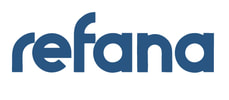|
This year 773,000 people will be arrested based on field drug tests with known accuracy problems. This report provides the first-ever comprehensive analysis of presumptive drug field test usage across law enforcement agencies in the United States. Inexpensive and fast, these tests have become a tool of choice for law enforcement agencies. Unfortunately, they are notoriously imprecise and are known to produce “false positives,” leading to frequent wrongful arrests and wrongful convictions. Utilizing a nationwide survey of agencies, the report offers national estimates on the frequency of test usage, finding that each year approximately 773,000 drug-related arrests involve the use of presumptive tests. Although the true error rate of these tests remains unknown, estimates based on the imperfect data that are available suggest that around 30,000 arrests each year involve people who do not possess illegal substances but who are nonetheless falsely implicated by color-based presumptive tests. On a per capita basis, Black Americans experience these erroneous drug arrests at a rate 3x higher than White Americans. While factors like eyewitness misidentification, false confessions, or prosecutorial misconduct have been previously cited as leading causes of wrongful convictions, these new results indicate that the use of presumptive field tests in drug arrests is one of the largest, if not the largest, known contributing factor to wrongful arrests and convictions in the United States. Download the report here.
0 Comments
In 2023, artificial intelligence (AI) has made significant strides in healthcare, according to experts. Six major AI innovations have reshaped medical practices, contributing to a more personalized, efficient, and accessible healthcare landscape. 1. Generative AI, including ChatGPT:
Overall Impact:
Artificial intelligence experts share 6 of the biggest AI innovations of 2023: 'A landmark year'From cancer care to communications, here’s where AI moved the needle in health care. Read the Fox News article here. Harnessing the Power of Near-Infrared (NIR) Technology in HealthcareTechnological advancements in recent years have played a pivotal role in revolutionizing the healthcare industry. One such groundbreaking innovation is the application of Near-Infrared (NIR) technology, a spectrum of light that lies just beyond the visible range. NIR has found a multitude of applications in various fields, and its potential in healthcare is increasingly being recognized for its non-invasive, rapid, and precise capabilities.
Understanding Near-Infrared (NIR): Near-Infrared light occupies the spectrum between 700 and 2500 nanometers, making it invisible to the human eye. This range allows NIR to penetrate biological tissues, providing valuable insights into the molecular composition of cells and tissues without causing harm. Applications in Medical Imaging:
Diagnostic and Monitoring Tools:
Advantages and Challenges:
However, challenges such as standardization, data interpretation, and widespread adoption need to be addressed to maximize the potential benefits of NIR in healthcare. Near-Infrared technology is proving to be a transformative force in healthcare, offering a spectrum of applications ranging from medical imaging to diagnostic tools. As research and development continue to refine and expand the capabilities of NIR, the healthcare industry stands to benefit from more precise, efficient, and patient-friendly solutions. Embracing this technology opens doors to a new era of healthcare where diagnosis and monitoring are not only accurate but also more accessible to a wider population. |
Details
Categories
All
Archives
June 2024
|
Practical Solutions for complex and urgent global medical problems
© 2024 Refana Inc


 RSS Feed
RSS Feed